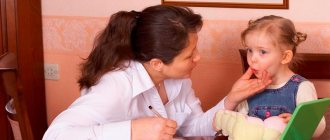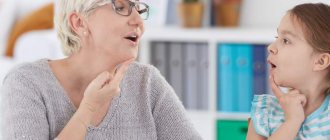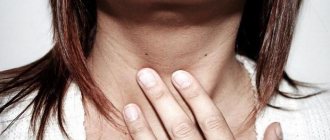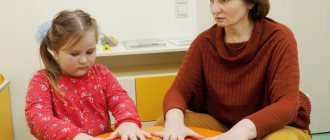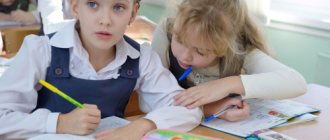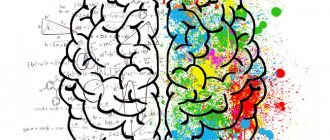Apraxia in speech therapy is a movement disorder that involves problems with the pronunciation of sounds, syllables and words. The defect is not caused by muscle weakness or paralysis, but by pathological dysfunction of the brain.
The child wants to pronounce a phrase, but the movements of his articulatory muscles are not coordinated.
Apraxia is distributed on a large scale throughout the world. Every year the percentage of children suffering from this diagnosis doubles. Approximately 10:1000, this number of patients are registered with apraxia.
Treatment of apraxia in Saratov, Russia, therapy of apraxia
Sarklinik provides treatment for certain types of apraxia in adults, adolescents, children, boys, girls, boys, girls, men, women in Saratov, Russia. The doctor knows how to treat apraxia , how to cure apraxia, how to get rid of apraxia, what to do with apraxia, where to go. At the first consultation, will the doctor tell you what types of apraxia there are? What are the characteristics of kinesthetic (kinetic) apraxia, aphasia and agnosia ? Why does oral apraxia, motor apraxia, constructive apraxia, articulatory apraxia, regulatory apraxia occur in children and adults? What is apraxia of walking and speech? What is the danger of motor left, right hand, left, parva leg, fingers, ideator apraxia? What are the principles for diagnosing apraxia ? Unfortunately, traditional methods, traditional medicine, diet, pills, medicines, drugs, traditional methods, spells, homeopathy rarely help in the treatment of apraxia. On the website sarclinic.ru you can see a doctor online for free.
Sign up for a consultation. There are contraindications. Specialist consultation is required.
Related posts:
Depersonalization: causes, symptoms, treatment of depersonalization in Saratov, Russia
Millard–Gubler syndrome (A. Millard, AM Gubler) alternating pontine
Dysmorphophobia, treatment in Saratov, how to treat dysmorphophobia
I'm afraid to speak, logophobia: treatment of logophobia for stuttering, the child is afraid to speak
Mobius syndrome, treatment of Mobius syndrome, congenital facial palsy, Poland syndrome
Comments ()
Etiology, risk factors
Manifestations of apraxia are associated with damage to the parietal, frontal lobes of the cerebral cortex, and corpus callosum. The following pathologies can provoke this condition:
- dementia arising from chronic lack of blood circulation;
- traumatic brain injuries;
- encephalitis;
- Alzheimer's disease;
- brain tumors;
- Parkinson's disease.
If you have one of the diseases described above, you need to regularly monitor your health over time.
Presentation
Apraxia of speech (AOS) is a neurogenic communication disorder that affects the motor programming system for speech production.[6][7] People with AOS demonstrate difficulties with speech, especially sequencing and forming sounds. The Levelt model describes the process of speech production in the following three sequential stages: conceptualization, formulation, and articulation. According to Levelt's model, apraxia of speech falls within the articulatory region. The person does not suffer from language impairment, but has difficulty reproducing speech aurally. Notably, this difficulty is limited to vocal speech and does not affect sign language production. The person knows exactly what he wants to say, but there is a disturbance in the part of the brain that sends the signal to the muscle for a specific movement.[7] Individuals with acquired AOS exhibit distinctive characteristics of articulation and prosody (rhythm, stress, or intonation) errors.[6][7] Coexisting characteristics may include fumbling and laborious self-corrected speech production, difficulty initiating speech, abnormal tension, intonation and rhythm errors, and inconsistency with articulation.[8]
Wertz et al. (1984) describe the following five speech characteristics that a person with apraxia of speech may exhibit:[8]
Trial and error when searching Groping is when the mouth searches for the position needed to create the sound. When this trial and error process occurs, sounds may last longer, be repeated, or sound silent. In some cases, a person suffering from AOS may be able to produce certain sounds on their own, easily and unconsciously, but when prompted by another to produce the same sound, the patient may feel their lips using volitional control (conscious awareness of attempting to make speech movements) in an attempt to produce sound.[7] Self-correction of errors Patients are aware of their speech errors and can try to correct themselves. This may include distorted consonants, vowels and sound substitutions. People with AOS often understand speech much better than they can express. This receptive ability allows them to make attempts at self-correction.[9] Abnormal Rhythm, Stress, and Intonation Patients with AOS exhibit prosodic errors, including abnormal pitch, frequency, and rhythm. This impaired prosody makes their speech either too slow or too fast and highly segmented (lots of pauses). The AOS speaker also emphasizes syllables incorrectly and monotonously. As a result, speech is often described as "robotic". When words are produced monotonously with equal syllabic stress, a word such as "tectonic" may sound "tec-ton-ic" rather than "tec-TON-ic". These patterns occur even if speakers know the prosodic patterns to use.[10] Inconsistent articulation errors when reproducing the same utterance repeatedly When reproducing the same utterance on different occasions, a person with AOS may have difficulty using and maintaining the same articulation previously used for that utterance. On some days, people with AOS may have more errors or may seem to "lose" the ability to make certain sounds for a while. Articulation also becomes more difficult when a word or phrase requires adjustments in articulation, in which the lips and tongue must move to switch between sounds. For example, the word "baby" requires fewer oral adaptations than the word "dog" since the word "dog" requires two movements of the tongue/lips for articulation.[6] Difficulty in initiating speech Expressing speech becomes a difficult task for patients with AOS, leading to various speech errors. Errors in completing a speech movement gesture may increase as the length of the utterance increases. Because polysyllabic words are difficult, those with AOS use simple syllables and a limited range of consonants and vowels.[6][7]
Diagnosis of the pathological condition
Who diagnoses the disease? To assess speech development, an audiologist is involved, who must assess the condition of the hearing organs and exclude this factor as the cause of the disorder. The speech therapist checks the characteristics of oral speech, motor skills, and melody. Oral-motor assessment criteria:
- checking the muscle tone of the speech apparatus;
- development of coordination;
- orderliness of muscle movements.
The specialist observes the patient while performing speech therapy tasks and in functional situations. The test of melody lies in the ability to change intonation and pauses. An important criterion for speech development is the patient’s ability to conduct a dialogue, to the extent that what he says is understandable to others.
Making a diagnosis begins with studying the medical history and analyzing the patient’s complaints. Primary attention is paid to the articulation of the eyelids, the ability to perform simple everyday actions (for example, unfastening and fastening buttons). Already visually, a specialist can guess the specifics of the disorder. Apraxia is confirmed instrumentally after hardware diagnostics of the brain.
History and terminology
The term apraxia was first defined by Hugo Karl Lipmann in 1908 as “the inability to perform voluntary actions despite preserved muscle strength.” In 1969, Frederick L. Darley coined the term "apraxia of speech", replacing Lipman's original term "apraxia of the glosso-labio-pharyngeal structures". Paul Broca also identified this speech disorder in 1861, which he called "aphemia": a disorder associated with difficulty in articulation despite intact language skills and muscle function.[6]
The disorder is currently called "apraxia of speech", but was previously also called "verbal dyspraxia". The term apraxia comes from the Greek root praxis, which means the performance of an action or skillful movement.[8] Adding the prefix “a,” meaning absent, or “dys,” meaning abnormal or difficult, to the root “praxis,” both of which imply speech difficulties associated with movement.
Control
In cases of acute AOS (stroke), spontaneous recovery may occur, in which the previous speech abilities reappear independently. In all other cases of acquired AOS, certain therapy is required; however, therapy varies depending on the patient's individual needs. Typically, treatment includes individual therapy with a speech-language pathologist (SLP).[2] For severe forms of AOS, therapy may include several sessions per week, the number of which decreases as speech improves. Another major theme in AOS processing is the use of repetition to achieve a large number of target utterances or desired speech uses.
There are various treatments for AOS. One technique, called the linguistic approach, uses rules for sounds and sequences. This approach focuses on the position of the mouth when producing speech sounds. Another type of treatment is a motor programming approach, which teaches the motor movements needed for speech. This technique uses a large number of repetitions to practice the sequences and transitions needed between sound productions.
Research into apraxia treatment has identified four main categories: articulatory-kinematic, rate/rhythm control, cross-system facilitation/reorganization treatment, and alternative/enhancing communication.[21]
- Articulatory-kinematic treatment almost always requires verbal production to improve speech. One common method for doing this is through modeling or repetition to establish the desired speech behavior. Articulatory-kinematic treatments are based on the importance of patients to improve spatial and temporal aspects of speech.
- Rate and rhythm control techniques are available to correct errors in the timing of patients' speech, which is a common characteristic of apraxia. These methods often involve an external source of control, such as a metronomic rhythm, such as in repetitive speech.
- Cross-system reorganization/facilitation techniques often involve physical body or limb gestures to improve speech. Gestures are usually combined with verbalization. It is believed that limb gestures can improve speech organization.
- Finally, alternative and complementary communication approaches to treating apraxia are highly individualized for each patient. However, they often include a "comprehensive communication system" that may include "speech, a communication aid book, a spelling system, a drawing system, a gesture system, technology, and informed speech partners."
One particular treatment is called PROMPT. This acronym stands for Prompts for Restructuring Oral Muscular Phonetic Targets,[22] and takes a multidimensional approach to the treatment of speech disorders. PROMPT therapists integrate physical-sensory, cognitive-linguistic and socio-emotional aspects of movement activity. The focus is on developing language interaction through this tactile-kinetic approach using sensory cues to facilitate articulatory movements associated with individual phonemes and ultimately words.
One study describes the use of electropalatography (EPG) to treat a patient with severe acquired apraxia of speech. The EPG is a computer-based tool for the assessment and treatment of speech motor skills. The program allows patients to see the placement of articulators while speaking, which helps them when trying to correct errors. Initially, after two years of speech therapy, the patient developed speech motor and performance problems, including problems with phonation, articulation, and resonance. This study found that EPG therapy provided the patient with valuable visual feedback to clarify speech movements that the patient had difficulty performing when only auditory feedback was given.[23]
Although many studies are still examining different treatment modalities, several of ASHA's suggestions for treating patients with apraxia involve integrating objective treatment data, theoretical rationale, clinical knowledge and experience, and the patient's needs and goals.
Gesture prompts
Another approach is to use visual gesture cues. The parent or therapist touches their mouth when they make a certain sound. For example, we can bring our index finger to our lips and move it away when we say the sound "p". The prompt draws the child's attention to how the lips form a certain sound.
We will use more than one clue when we say a whole word to show the difference between the sounds in a word. The combination of visual and verbal cues helps the child focus, understand and pronounce the word better.
This type of prompting can be especially helpful for children with autism, who often tend to be visual learners. However, this method requires that the child can pay attention to the cues and imitate them.
